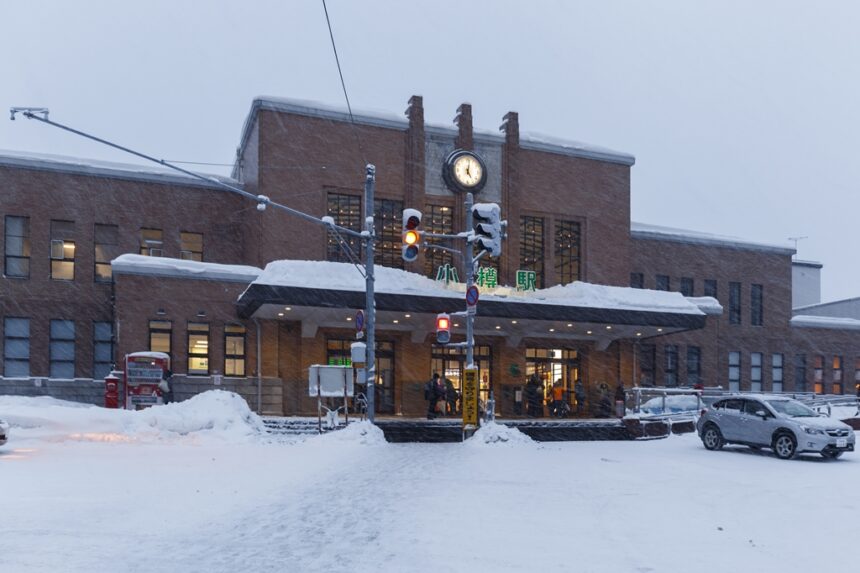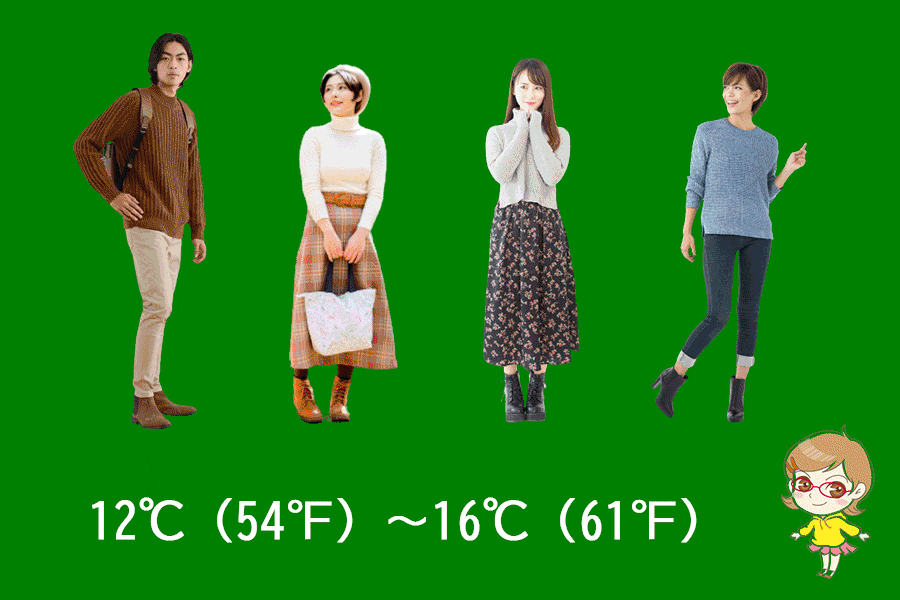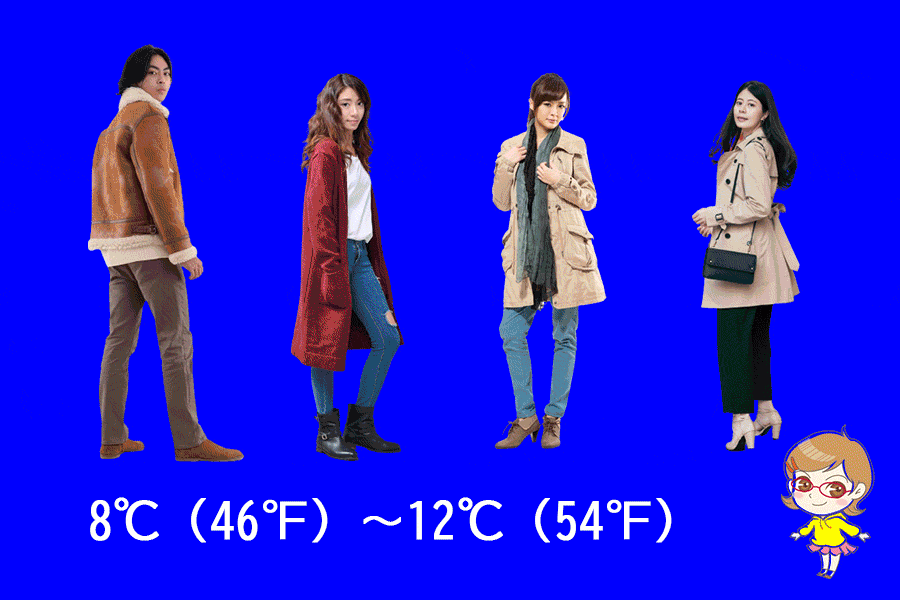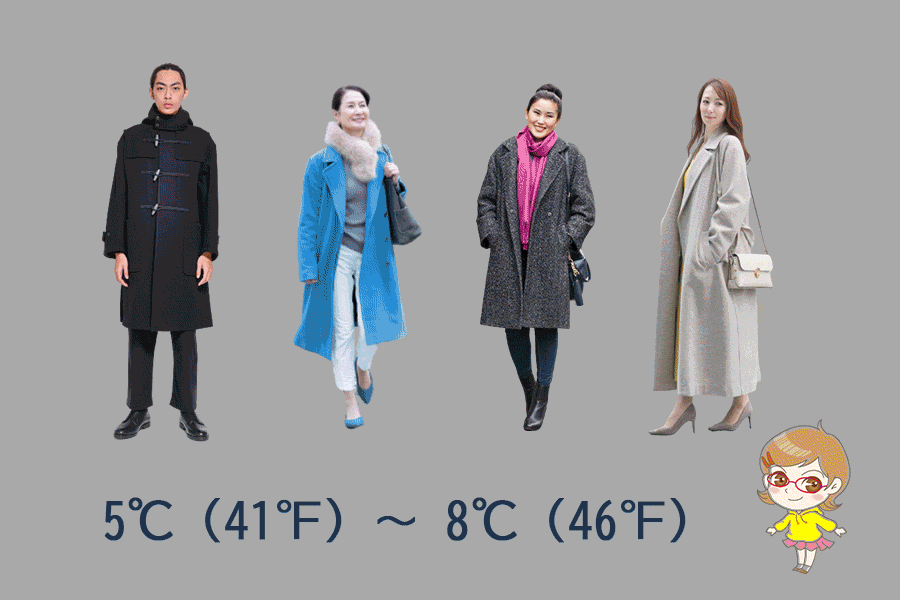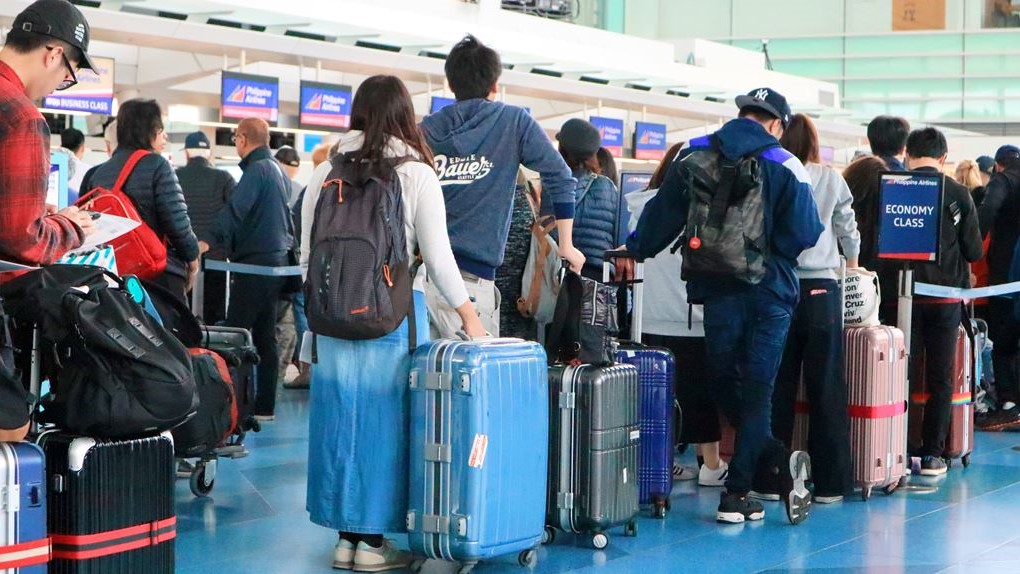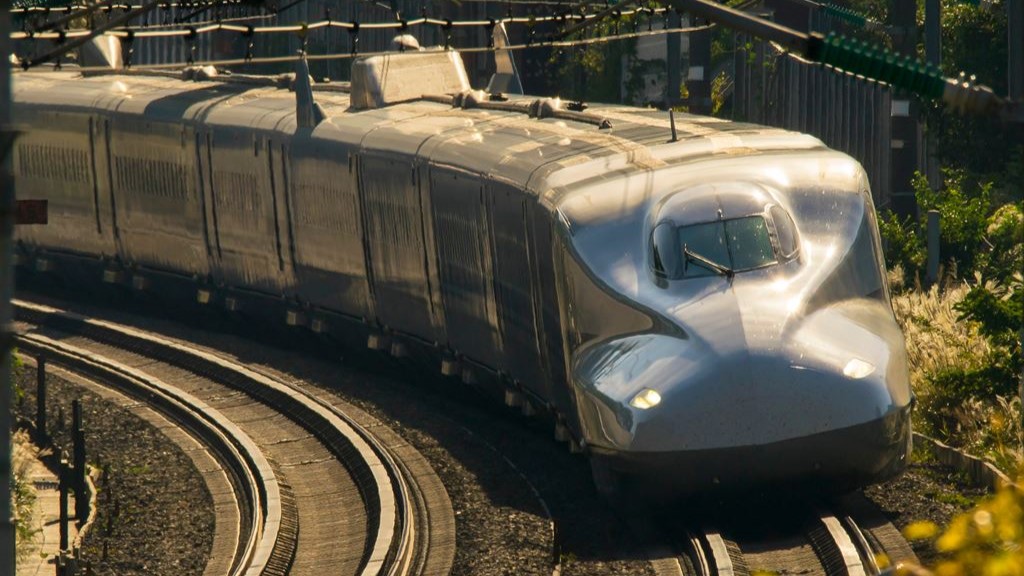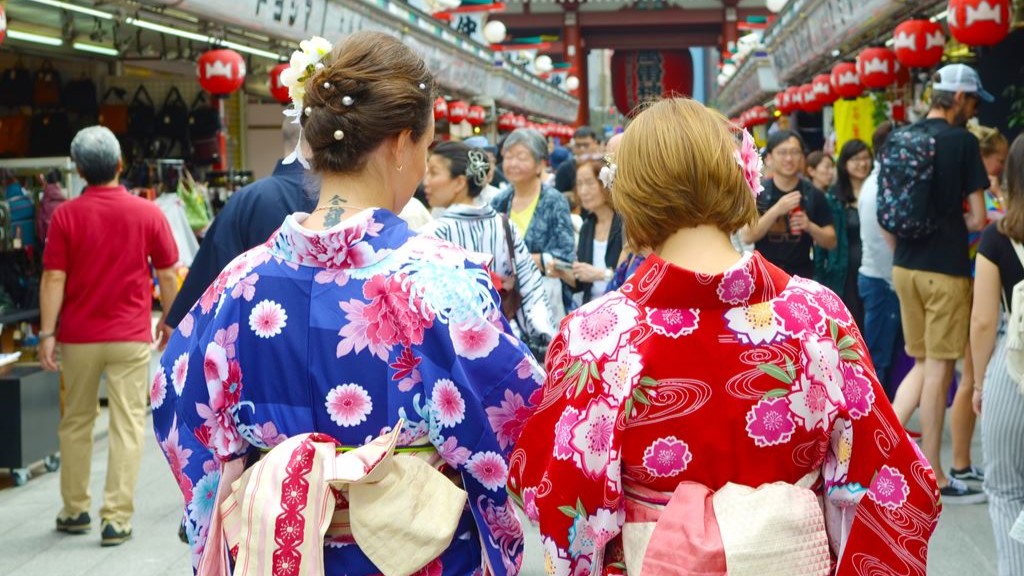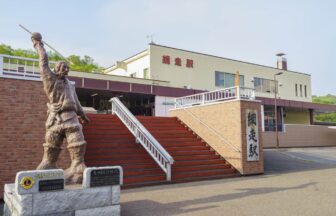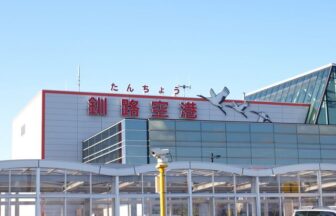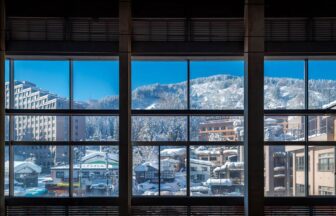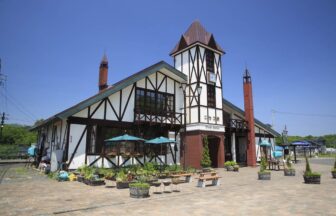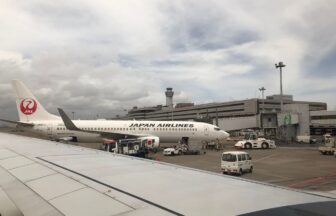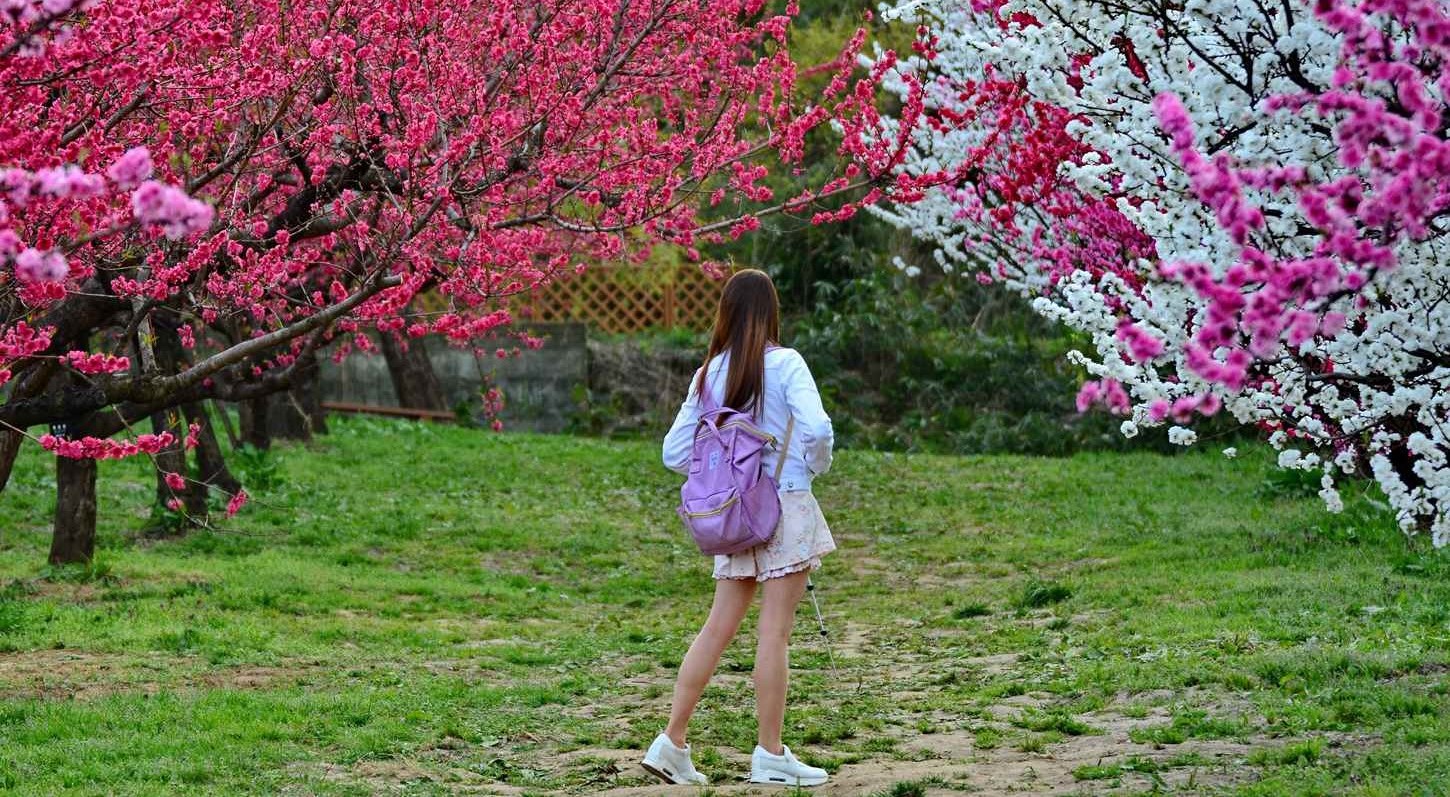2-22-15 Inaho, Otaru-City, Hokkaido 047-0032 MAP
↓ Click to jump to the relevant section.
| Current Weather | Annual Weather | Tourist Attractions |
| Baggage Deposit | Hotels |
Current weather and clothing

The weather information shown here is the information closest to the station in question. Please note that there may be slight differences.
Yearly temperature changes and recommended clothing
Clothing recommendations for each temperature range
When traveling in Japan with the following average temperatures, the recommended clothing is as follows:
Monthly changes in temperature, precipitation, and snowfall (1991~2020 average, Japan Meteorological Agency survey)
| Jan. | Feb. | Mar. | Apr. | May | Jun. | Jul. | Aug. | Sep. | Oct. | Nov. | Dec. | |
| temperature(°C) | -3.1 | -2.7 | 0.8 | 6.5 | 12.1 | 16 | 20.2 | 21.7 | 18.1 | 11.8 | 4.9 | -1.1 |
| precipitation(mm) | 138.1 | 106.6 | 87.3 | 56.4 | 53.7 | 55.6 | 93.6 | 131.3 | 131.7 | 123 | 152.4 | 151.9 |
| snowfall(cm) | 157 | 130 | 80 | 7 | — | — | — | — | — | 0 | 36 | 142 |
Winter
November
November in Otaru is the start of winter with average temperatures ranging from 3°C to 6°C. Precipitation is 152.4mm in November, so visitors should still expect some rain and snow during their trip. Snowfall begins in November, so visitors should be prepared for snowy conditions and bring appropriate footwear.
For men, it is recommended to wear warm clothing such as a heavy jacket or parka, a warm sweater or fleece, and pants. Good waterproof boots with good grip are important to cope with the snow and wet ground. For women, it is recommended to wear warm clothing such as a heavy jacket or parka, a warm sweater, and pants or a warm skirt. Good waterproof boots with good grip are also necessary to cope with the snow and wet ground.
December
December in Otaru is winter with average temperatures ranging from -1°C to 2°C. Precipitation is around 150 mm in December, so visitors should expect snow and rain during their trip. Snow is abundant in December, so visitors should be prepared for snowy conditions and bring appropriate footwear.
For men, it is recommended to wear warm clothing such as a heavy jacket or parka, a warm sweater or fleece, and pants. Good waterproof boots with good grip are important to cope with the snow and wet ground. For women, it is recommended to wear warm clothing such as a heavy jacket or parka, a warm sweater, and pants or a warm skirt. Good waterproof boots with good grip are also necessary to cope with the snow and wet ground.
January
January in Otaru is one of the coldest months, with an average temperature of -3.1°C. Precipitation is moderate, with the possibility of snowfall. Visitors should prepare for the cold weather by wearing warm clothing such as a heavy coat, hat, gloves, and warm shoes. Women may want to bring a scarf to keep their neck warm, and men may want to bring a warm hat to protect their head and ears.
February
February in Otaru is also cold, with an average temperature of -2.7°C. Precipitation levels remain moderate, and there is still the possibility of snowfall. Visitors should continue to wear warm clothing, such as a heavy coat, hat, gloves, and warm shoes. Women may want to bring a scarf to keep their neck warm, and men may want to bring a warm hat to protect their head and ears.
March
March in Otaru is when the weather starts to get slightly warmer, with an average temperature of 0.8°C. However, there is still a chance of snowfall and moderate precipitation levels, so visitors should continue to wear warm clothing. Women may want to bring a scarf and a hat, while men may want to bring a warm hat and gloves.
Spring
April
April in Otaru is warmer, with an average temperature of 6.5°C. Precipitation levels are low, and there is a low chance of snowfall. Visitors should bring lighter clothing for this month, such as a light coat or sweater, as well as a hat and gloves for protection from the cold. Women may also want to bring a scarf.
May
May in Otaru is when the weather starts to get warmer, with an average temperature of 12.1°C. Precipitation levels remain low, and there is no longer a chance of snowfall. Visitors should bring light clothing, such as a light coat or sweater, and a hat and gloves for protection from the cold. Women may also want to bring a scarf.
June
June in Otaru is the start of summer, with an average temperature of 16C. Precipitation levels are low, and there is no longer a chance of snowfall. Visitors should bring light clothing, such as a light coat or sweater, and a hat and gloves for protection from the cold. Women may also want to bring a scarf.
Summer
July
July in Otaru is when the weather is at its warmest, with an average temperature of 20.2°C. Precipitation levels remain low, and there is no longer a chance of snowfall. Visitors should bring light clothing, such as a light coat or sweater, and a hat and gloves for protection from the cold. Women may also want to bring a scarf.
August
August in Otaru is also warm, with an average temperature of 21.7°C. Precipitation levels are low, and there is no longer a chance of snowfall. Visitors should bring light clothing, such as a light coat or sweater, and a hat and gloves for protection from the cold. Women may also want to bring a scarf.
Autumn
September
September in Otaru is a transition month from summer to autumn with average temperatures ranging around 18°C. Precipitation is 131.7 mm in September, so visitors should expect some rain during their trip. It is also important to note that the weather in Otaru can be quite humid in September. As a result, it is recommended that tourists dress in layers and bring a waterproof jacket or umbrella.
For men, it is advisable to wear light to medium weight clothing such as a t-shirt, lightweight sweater or light jacket, and pants. It is also recommended to wear waterproof shoes as the rain can make the ground wet and slippery. For women, a long-sleeve blouse, a light sweater, and pants or a skirt are recommended. A waterproof jacket or umbrella is also important to bring. Comfortable walking shoes with good grip would also be helpful to cope with the rain and wet ground.
October
October in Otaru sees the start of autumn with average temperatures ranging from 11°C to 12°C. Precipitation is 123 mm in October, so visitors should still expect some rain during their trip. The weather can also be quite windy in October, so it is important to bring a windbreaker or lightweight jacket to stay warm.
For men, it is recommended to wear a light to medium weight jacket, a warm sweater or fleece, and pants. A windbreaker or light raincoat may also be necessary to protect against the wind and rain. Good walking shoes with good grip are also recommended. For women, a light to medium weight jacket, a warm sweater, and pants or a skirt are recommended. A windbreaker or light raincoat can also protect against the wind and rain. Comfortable walking shoes with good grip are important to cope with the rain and wet ground.
Recommended tourist destinations
Otaru Canal
Minatomachi, Otaru 047-0007 Hokkaido
Along the canal, stone warehouses and historical buildings are scattered. The sight of gas lamps lighting up at dusk creates a romantic atmosphere. There are also many retro restaurants in converted warehouses in the surrounding area.
Mt.Tengu
2 Tenguyama, Otaru 047-0012 Hokkaido
A ropeway takes you to the observatory at the top of the mountain, where you can enjoy a panoramic view of the city of Otaru and the Sea of Japan. At the top of the mountain, there is a park where you can meet chipmunks and a café and bar where you can enjoy the spectacular view. The beautiful night view is especially famous.
Kitaichi Glass 3gokan
7-26 Sakaimachi, Otaru 047-0027 Hokkaido
One of the most famous glass craft stores in Otaru. There are many souvenirs with a Japanese taste, such as sake cups for Japanese sake and soy sauce containers.
Otaru Art Base
1-3-1 Ironai, Otaru 047-0031 Hokkaido
Four facilities utilizing historical buildings built in the first half of the 20th century. Visitors can appreciate paintings, sculptures, stained glass, and glass art.
Sankaku Market
3-10-16 Inaho, Otaru 047-0032 Hokkaido
This popular market offers fresh seafood such as crabs, sea urchins, and scallops, as well as vegetables, fruits, and daily necessities at reasonable prices. Visitors can enjoy shopping in the unique atmosphere and liveliness of the market.
Otaru Sushi-ya-dori
1-1-9, Hanazono 1-chome, Otaru 047-0024 Hokkaido
The street lined with nearly 20 restaurants in the corner from Otaru Station to the canal is named “Sushi-ya-dori” (Sushi Restaurant Street). Because the fish is fresh, many of the sushi restaurants prepare sushi without seasoning it with vinegar or salt.
Otaru Aquarium
3-303 Shukutsu, Otaru 047-0047 Hokkaido
Inside the aquarium, there is a space that is simply partitioned off from the ocean, where seals and Steller’s sea lions live in a natural habitat. The aquarium also houses a globally rare species of dolphin and a variety of fish native to Hokkaido.
Otaru Museum, Bank of Japan
1-11-16 Ironai, Otaru 047-0031 Hokkaido
Historic building completed in 1912. Visitors can learn about the history and operations of the Bank of Japan while having fun, such as experiencing the weight of 100 million yen and anti-counterfeiting technology.
The Blue Cave
4-5 Minato-cho, Otaru-shi, 047-0007 Hokkaido
This beautiful blue cave is created by a combination of various coincidences, such as the topography, the angle at which the sun shines, and the transparency of the sea water. There are several cruise tours to view the caves from a small boat.
Where to leave your luggage
There are coin lockers at the far left side of the JR Otaru Station exit from the ticket gate.
There is also a JR Bus Waiting Area on the right side of the JR Otaru Station exit, and coin lockers are located in the waiting area.The JR Bus Waiting Area is open from 7:30 to 22:00.
Recommended hotels and inns
Grand Park Otaru
11-3 Chikko, Otaru 047-0008 Hokkaido
1.8 mi / 2.9 km from Otaru Station
Hotel class: 4
Hotel style: Bay View, Ocean View
Check Rates & Availability:
>> See on Tripadvisor
>> See on Trip.com
>> See on Expedia
Dormy Inn Premium Otaru
3-9-1 Inaho, Otaru 047-0032 Hokkaido
2-minutes from Otaru Station
Hotel class: 3
Hotel style: Business, Family
Check Rates & Availability:
>> See on Tripadvisor
>> See on Trip.com
>> See on Expedia
Hotel Torifito Otaru Canal
1-5-7 Ironai, Otaru 047-0031 Hokkaido
7-minutes from Otaru Station
Hotel class: 3
Hotel style: Trendy, Business
Check Rates & Availability:
>> See on Tripadvisor
>> See on Trip.com
>> See on Expedia
Authent Hotel Otaru
2-15-1 Inaho, Otaru 047-0032 Hokkaido
5-minutes from Otaru Station
Hotel class: 3
Hotel style: Mid-range, Business
Check Rates & Availability:
>> See on Tripadvisor
>> See on Trip.com
>> See on Expedia
Hotel Nord Otaru
1-4-16 Ironai, Otaru 047-0031 Hokkaido
8-minutes from Otaru Station
Hotel class: 3
Hotel style: Great View, River View
Check Rates & Availability:
>> See on Tripadvisor
>> See on Trip.com
>> See on Expedia
Hotel Sonia Otaru
1-4-20 Ironai, Otaru 047-0031 Hokkaido
8-minutes from Otaru Station
Hotel class: 3
Hotel style: Great View, Family
Check Rates & Availability:
>> See on Tripadvisor
>> See on Trip.com
>> See on Expedia
Hotel Neushloss Otaru
3-282 Shukutsu, Otaru 047-0047 Hokkaido
2.8 mi / 4.5 km from Otaru Station
Hotel class: 4
Hotel style: Romantic, Great View
Check Rates & Availability:
>> See on Tripadvisor
>> See on Trip.com
Unwind Hotel & Bar Otaru
1-8-25 Ironai, Otaru 047-0031 Hokkaido
8-minutes from Otaru Station
Hotel class: 3
Hotel style: Business, Romantic
Check Rates & Availability:
>> See on Tripadvisor
>> See on Trip.com
>> See on Expedia
The Green Otaru Premier
3-5-14 Inaho, Otaru 047-0032 Hokkaido
4-minutes from Otaru Station
Hotel class: 3
Hotel style: Centrally Located
Check Rates & Availability:
>> See on Tripadvisor
>> See on Trip.com
>> See on Expedia
Otaru Furukawa
1-2-15 Ironai, Otaru 047-0031 Hokkaido
9-minutes from Otaru Station
Hotel class: 3
Hotel style: Classic, Great View
Check Rates & Availability:
>> See on Tripadvisor
>> See on Trip.com
>> See on Expedia
We support your itinerary planning!
Click the button to get an overview of hotel information and popular tourist routes from all over Japan featured on our site. We’ve included comprehensive details to aid in planning your trip, so please make use of it.
Comprehensive checklist before traveling to Japan

Book flights
Compare and purchase flight tickets
When planning your trip to Japan, it's advisable to start by researching flights several months in advance. Airlines often release promotional fares, especially during off-peak seasons. Use comparison sites like Skyscanner or KAYAK to get a sense of the price range. Be flexible with your travel dates if possible; flying mid-week might be cheaper than on weekends.
>> Visit Skyscanner's official website
>> Visit KAYAK's official website
Order Japan Rail Passes for each family member
Purchase your Japan Rail Pass before departure
The Japan Rail (JR) Pass offers unlimited travel on JR trains, making it a cost-effective option for tourists. However, it's only available to foreign tourists and must be purchased *before* you arrive in Japan. Determine the areas you plan to visit; if you're traveling extensively, a nationwide pass is beneficial, but if you're only exploring a specific region, consider regional JR passes. Children under 12 get a discounted pass, so ensure you order the correct type for each family member.
>>Visit Japan Rail Pass's website
Plan your attire for Japan
Check the weather at your destination on this site
Japanese weather varies significantly by season. In summer, it's hot and humid, so breathable clothes are essential. Winters, especially in the north, can be cold, requiring warm attire. If visiting during the rainy season (June to early July), pack a good umbrella and waterproof shoes. While Japan is generally casual, certain places like temples, shrines, or upscale restaurants may require modest and neat dressing.
Reserve a pocket Wi-Fi or SIM card

SIM card or pocket Wi-Fi is required
Beyond clothes, consider packing essentials like a universal power adapter (Japan uses Type A and B sockets), portable Wi-Fi or SIM card for internet access, and any necessary medications (with a copy of the prescription).
Which is better: a SIM card or pocket Wi-Fi?
When traveling in Japan, one essential to consider is securing internet access, especially given that many locations still don't offer free Wi-Fi. To ensure you can use your smartphone throughout your trip, you'll typically have three options: (1) a SIM card, (2) pocket Wi-Fi, or (3) the roaming service provided by your mobile company. Roaming services can be quite expensive, so we often recommend using a SIM card or pocket Wi-Fi. While SIM cards tend to be more affordable than pocket Wi-Fi, they can be trickier to set up. Pocket Wi-Fi, on the other hand, can be shared among several users, making it a favorable choice for families or groups.
▼SIM card
Advantages:
Relatively affordable.
Disadvantages:
Can be time-consuming to set up initially.
May have strict data limits.
▼Pocket Wi-Fi
Advantages:
Offers substantial data allowances.
A single device can be shared among multiple users.
Easily usable with PCs as well.
Disadvantages:
Typically more expensive.
Japan's representative services

Sakura Mobile's website
▼SIM card
>>Visit Sakura Mobile's official website
>>Visit mobal's official website
▼pocket Wi-Fi
>>Visit Sakura Mobile's official website
>>Visit NINJA WiFi's official website
>>Visit Wi-Fi RENTAL Store's official website
Book local tours as needed
Pre-book your tour and have a great trip!
Local tours offer deep insights into Japan's culture and heritage. Websites like Viator or GetYourGuide offer a variety of tours, from traditional tea ceremonies to modern pop culture tours in Akihabara. Consider unique experiences like staying with monks on Mt. Koya or taking a cooking class to learn authentic Japanese dishes.
>>Visit Viator's official website
>>Visit GetYourGuide's official website
Purchase advance tickets for popular attractions
Make a reservation to avoid crowds
Attractions like Tokyo Disneyland, Universal Studios Japan, or the Studio Ghibli Museum often have long ticket queues. Buy tickets online in advance to save time. Some attractions also have timed entry, so check the specific time slots available and plan accordingly.
▼Tokyo Disney Resort
>>Visit Tokyo Disney Resort official website
>>Visit Viator's Tokyo Disneyland page
>>Visit Viator's Tokyo DisneySea page
>>Visit GetYourGuide's Tokyo Disneyland page
>>Visit GetYourGuide's Tokyo DisneySea page
▼Universal Studios Japan
>>Visit USJ official website
>>Visit Viator's USJ page
>>Visit GetYourGuide's USJ page
Buy travel insurance

insurance concept, health, life and travel insurance
It is important to be prepared for emergencies
While Japan is a safe country, travel insurance is crucial for unforeseen events like health emergencies, travel disruptions, or lost baggage. Ensure your policy covers medical expenses in Japan, as healthcare, though excellent, can be expensive.
Here we introduce online travel insurance services that are popular worldwide.
World Nomads: An online travel insurance service widely endorsed by travelers worldwide. They offer plans that cover adventurous activities and high-risk sports.
>>Visit World Nomads' official website
AIG Travel Guard: An insurance service available to travelers all over the world. They offer a wide range of options, including cancellation protection and emergency medical insurance.
>>Visit AIG Travel Guard's official website
Share your itinerary with emergency contacts
Organize your reservation information
Keep a digital and printed copy of your detailed itinerary, including hotel addresses, train schedules, and booked tours. Share this with a trusted family member or friend not traveling with you.

